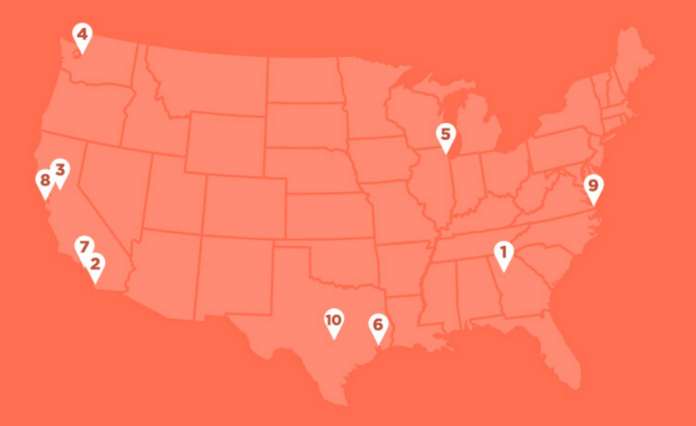In a new report, researchers from Nerd Wallet ranked the top mobile-friendly cities in the U.S. based on criteria including carrier performance, availability of in-person customer service, crime risk and whether cities had mobile-optimized municipal websites.
Based on the ranking, which was initially limited to the 50 largest cities in the country by population, you should head to Atlanta.
“Georgia’s largest city and capital tops the list when it comes to mobile friendliness,” the report found. “The city ranked near the top in all of our metrics — it was No. 2 in carrier network coverage among all 50 cities we measured, and third for customer service, with 8.4 mobile phone stores for every 10,000 residents. It also has the second-lowest wireless tax rate — federal, state and local taxes combined — of the top 10 cities.”
Based on an “easy-to-use mobile site … and its density of mobile stores,” San Diego took the No. 2 spot, followed by Sacramento, California; Seattle; and Chicago.
“Bigger doesn’t mean better,” the report noted. “Of the top 10 U.S. cities by population, only Chicago, Houston and San Diego make our top 10 list for mobile friendliness. … California dominates the top 10. The Golden State’s cities make up eight of the top 50 most populous U.S. cities, and half of those cities are in our top 10. … Customer service counts. A few of our top 10 mobile-friendly cities made up for lower performance in speed and coverage with stronger scores on key metrics such as the number of mobile phone sales and service centers per 10,000 people.”
Here’s a look at the full report and details of the methodology used by Nerd Wallet.

Top 5 mobile-friendly cities in the U.S.
ABOUT AUTHOR
